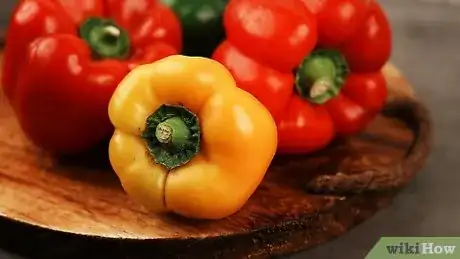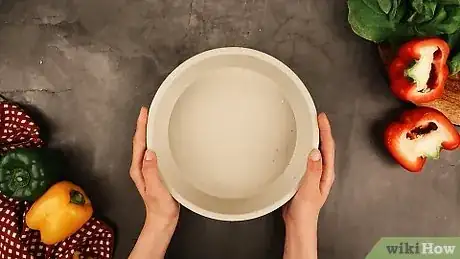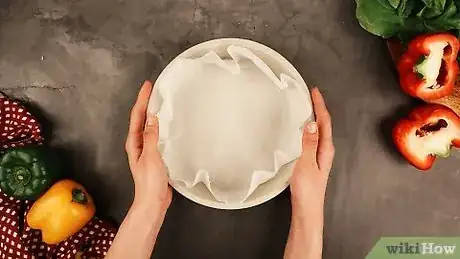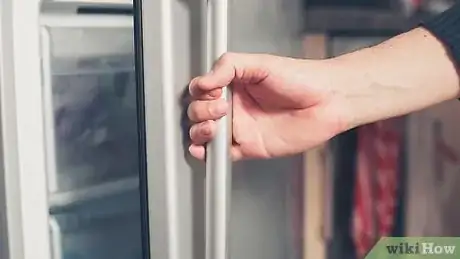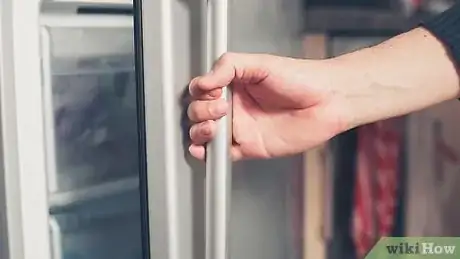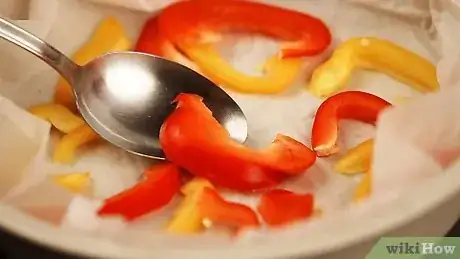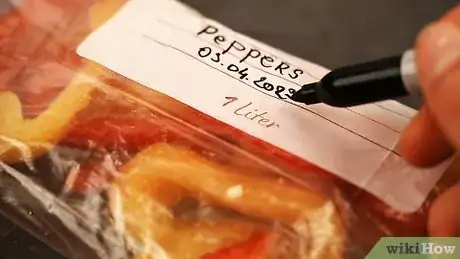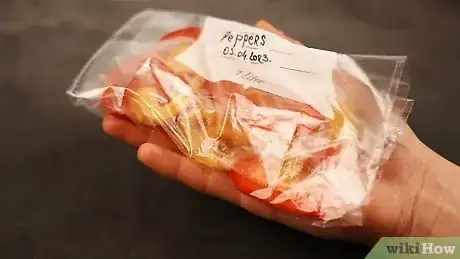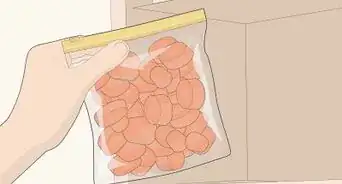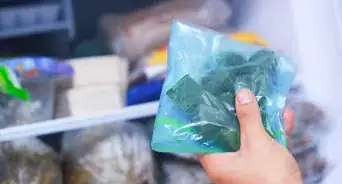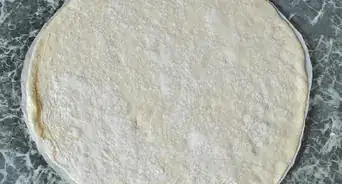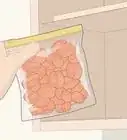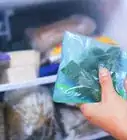wikiHow is a “wiki,” similar to Wikipedia, which means that many of our articles are co-written by multiple authors. To create this article, 11 people, some anonymous, worked to edit and improve it over time.
There are 9 references cited in this article, which can be found at the bottom of the page.
wikiHow marks an article as reader-approved once it receives enough positive feedback. In this case, 93% of readers who voted found the article helpful, earning it our reader-approved status.
This article has been viewed 191,492 times.
Learn more...
An overabundance of produce is a shame to waste. If you found a great deal on bell peppers or your plants were very successful, consider freezing the excess for use all year round.
Steps
Preparing Bell Peppers
Freezing Bell Peppers
-
1Find a cookie sheet that will fit in your freezer. Rearrange the contents of your freezer to ensure the cookie sheet has a flat space on which to rest for an hour.
-
2Cover the cookie sheet with parchment paper or wax paper to prevent the vegetables from sticking to the tray.
-
3Spread out your strips or your diced bell peppers. Ensure that they aren’t in clumps. Each piece of pepper will need air to circulate around the entire piece.[6]
-
4Flash freeze the peppers by placing them inside the freezer. Your freezer should be 0 degrees or below.
-
5Leave them in the freezer for 30 minutes to one hour. Check that they are individually frozen when you remove them.[7]
Storing Frozen Bell Peppers
-
1Lift the bell peppers from the parchment paper with a spoon or flat spatula.
-
2Pour the peppers into small freezer bags, approximately one-half to one cup (90 to 175 g) at a time.
-
3Squeeze all the air out of the freezer bag. Seal it tightly. If you have a vacuum-sealing machine, it will keep your bell peppers even fresher.[8]
-
4Label the bag with the contents and date.
-
5Store the vegetables in your freezer for up to eight months. While freezing the peppers may cause a slight loss in texture, you can usually cook bell peppers after freezing them without issue.
Community Q&A
-
QuestionCan peppers be cut in half, cleaned, and frozen for stuffed peppers?
 Community AnswerYes, that would be fine.
Community AnswerYes, that would be fine. -
QuestionCan bell peppers be frozen whole?
 QamarTop AnswererYes, they can. Cover the bell pepper with foil and store it in the freezer until ready to use.
QamarTop AnswererYes, they can. Cover the bell pepper with foil and store it in the freezer until ready to use. -
QuestionWill the peppers make my freezer smell like peppers?
 Community AnswerIt depends on the type of pepper, but if you keep it in an airtight container or Ziploc, the chances are minimized.
Community AnswerIt depends on the type of pepper, but if you keep it in an airtight container or Ziploc, the chances are minimized.
Things You'll Need
- Bell peppers
- Water
- Cutting board
- Knife
- Cookie sheet
- Wax paper/parchment paper
- Freezer
- Freezer bags
- Spatula
- Vacuum-sealing machine (optional)
- Marker
References
- ↑ https://www.berkeleywellness.com/healthy-eating/food/article/how-choose-best-sweet-peppers
- ↑ http://www.whfoods.com/genpage.php?tname=whfkitqa&dbid=59
- ↑ https://www.bhg.com/recipes/how-to/cooking-basics/how-to-seed-a-pepper/
- ↑ https://nchfp.uga.edu/how/freeze/pepper_bell.html
- ↑ http://food.unl.edu/web/preservation/freezing-peppers
- ↑ http://www.home-ec101.com/back-to-basics-freezing-bell-pepper/
- ↑ https://www.stilltasty.com/articles/view/64
- ↑ https://www.washingtonpost.com/lifestyle/food/the-correct-way-to-freeze-most-kinds-of-peppers/2016/02/26/644562d2-dbe5-11e5-81ae-7491b9b9e7df_story.html
- ↑ http://nchfp.uga.edu/how/freeze/pepper_bell.html
About This Article
To freeze bell peppers, start by rinsing them under cold water and cutting them into strips or cubes. Then, cover a cookie sheet with parchment paper so the vegetables don't stick, and spread out your chopped peppers on the paper. Next, place the tray in the freezer for 1 hour. When the peppers are frozen, transfer them into freezer bags, squeeze all of the air out, and seal the bags. Finally, label the bags with the date and store them in your freezer for up to 8 months. For tips on how to remove the seeds from your peppers, read on!
